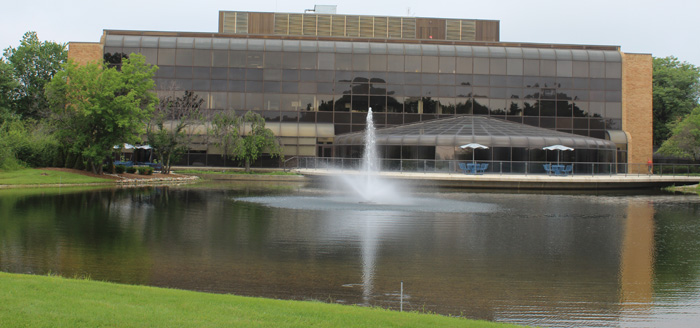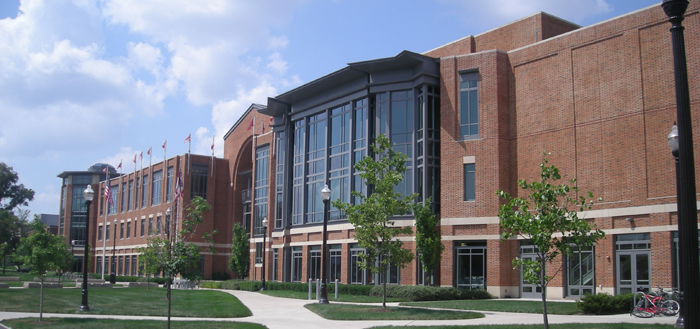According to Kiplinger Personal Finance magazine in 2013, more than any other major, Pharmacy studies lead to well-paying jobs for both fresh graduates and experienced workers. Thanks to the aging of the American population, more of these health care professionals are needed every day. This has also given rise to the average pharmacist salary (more about this).
Pharmacists need 3 to 4 years of professional training culminating in the Doctor of Pharmacy (Pharm.D). The Pharm.D should be obtained from a school fully accredited by the American Council on Pharmaceutical Education, or ACPE, the only acceptable accrediting organization for the pharmaceutical sciences. Ambitious students are rushing to get professional degrees from the best pharmacy schools in the U.S. Here are the top 10 programs offering a high-quality education in the pharmaceutical sciences, according to U.S. News & World Report in 2012.
1. University of California at San Francisco
A prestigious West Coast school in sunny San Francisco, the University of California–SF is deservedly the nation’s top pharmacy school, with exceptional research opportunities and award-winning faculty. UCSF pharmaceutical studies consist of three departments: the Departments of Clinical Pharmacy, Bioengineering and Therapeutic Sciences, and Pharmaceutical Chemistry. UCSF receives more funding from the National Institutes of Health (NIH) than any other pharmacy school in the U.S. It’s the most selective program, with 8 percent of applicants accepted each year. It’s also the most expensive for in-state students at $30,000 a year.
2. University of North Carolina at Chapel Hill

Flickr / William Yeung
The Eshelman School of Pharmacy at the University of North Carolina–Chapel Hill is a top-tier choice for aspiring pharmacists, offering an M.S. and Ph.D. in Pharmaceutical Sciences in addition to the Pharm.D. Although there is no standalone bachelor program, students who complete three years of professional study are provided a Bachelor of Science in Pharmaceutical Sciences here. Between one-fifth and one-third of each class is from out-of-state, with admission granted to about 1 in 4 applicants. Enrollees can complete the Pharm.D program on either the Chapel Hill, Elizabeth City or Asheville campus.
3. University of Minnesota—Twin Cities

Flickr / nathanm
Located in the chilly Twin Cities of eastern Minnesota, the University of Minnesota’s College of Pharmacy is a respected choice for prospective pharmacists. It is the largest pharmacy school on this list, with an enrollment of about 700. Students can choose to study at either the Minneapolis or Duluth campus. UM–Twin Cities has a substantial research portfolio of more than $30 million. Major areas of research include drug discovery, neuroscience, and cancer therapies. Educational tracks apart from the traditional Pharm.D include M.S. degrees in Integrated Biological Sciences and Social & Administrative Pharmacy, plus doctoral programs in Experimental & Clinical Pharmacology and Medicinal Chemistry. UM’s Ph.D. programs are comparatively pricey.
4. University of Texas at Austin

University of Texas at Austin (Wikimedia)
Located in ‘weird’ Austin, Texas, the urban University of Texas and its College of Pharmacy are known for talented and experienced faculty and a highly productive research base. UT Austin boasts extremely high MPJE pass rates greater than 99 percent. Its $10 million research fund is one of the largest among the top pharmacy schools. The Pharm.D is relatively affordable for Texas residents; in-state tuition is about $16,000 a year. Admissions officials look for applicants with strong PCAT scores and an interest in pharmacy practice as demonstrated by volunteer or work experience. PCAT scores are required for a student to be considered for admission.
5. University of Wisconsin at Madison

University of Wisconsin at Madison (Wikimedia)
The School of Pharmacy at the University of Wisconsin at Madison is a well-rounded option for practical training and research opportunities. Students conduct projects on patient outcomes, policy options, financing, and quality assurance at the Sonderegger Research Center — the first facility in the nation for health research in the pharmaceutical sciences. There is also ongoing research on new medicines in centers like the Zeeh Pharmaceutical Experiment Station. UWM is the only school on this list that lets students get a dual Pharm.D-M.D. A unique bachelor’s in Pharmacology—Toxicology is also available. UWM is the smallest pharmacy school on this list, with just over 300 enrolled, but it has the highest acceptance rates at around 40 percent.
6. University of Kentucky

Flickr / Tom Ipri
Founded in 1870, the University of Kentucky is the oldest pharmacy school in the country among the top programs. It has relatively selective admissions and high tuition. The Lexington-based school is known for its thorough preparation of students for NAPLEX, the gateway test for pharmacy practice. More UK graduates pass the licensing examination on the first try than any other school. No M.S. degree is offered here, but Pharm.Ds can supplement their studies with an MPH or MBA. The University of Kentucky is the most expensive on this list for out-of-state students, at nearly $50,000 a year. In-state students pay $27,000 for each year of pharmacy school.
7. University of Michigan at Ann Arbor

University of Michigan–Ann Arbor (Wikimedia)
The University of Michigan is located in the much-loved urban college town of Ann Arbor. Michigan’s College of Pharmacy is highly rated in part because of its advanced biomedical research facilities. UMich pharmacy students have access to the Vahlteich Medicinal Chemistry Core, where research on the design and synthesis of drugs and diagnostic instruments is ongoing. Ph.D.s are available in both Pharmaceutical Sciences and Medicinal Chemistry at UMich. There is a B.S. in Pharmaceutical Sciences for undergrads, but no M.S. In-state tuition is cheaper than the average for all pharmacy schools at about $22,000 a year.
8. Purdue University

Flickr / linademartinez
Purdue University, in urban West Lafayette, Indiana, is a top-rated national research institution. The West Lafayette campus, where the College of Pharmacy is located, is the flagship school of the six-campus Purdue system. Purdue is known for graduating students of pharmacy who get jobs right away. It is one of the few top pharmacy schools with a nuclear pharmacy training program. Admissions for Purdue’s College of Pharmacy are very competitive, with 16 percent accepted annually on a rolling basis. Spots fill up quickly. Purdue is the most affordable school on this list, both for Indiana residents and out-of-state students, with a tuition range from $9,000 to $27,000 a year for Pharm.Ds.
9. Ohio State University

Ohio State University (Wikimedia)
Ohio State University (OSU) is considered the most prestigious public school in the Midwest. It is a large school located in a large city – Columbus in central Ohio. The College of Pharmacy is connected to OSU’s top-40 College of Medicine and its well-funded Medical Center, one of the largest and most diverse academic medical research centers in the country. OSU’s Doctor of Pharmacy program has a small average class size of 130. For those interested in pharmaceutical policy, a dual Pharm.D-MPH is available. A bachelor’s degree is required for admission.
10. University of Washington

Flickr / Curtis Cronn
As one of the oldest schools on the West Coast, the University of Washington is a highly regarded national research institution. Located in urban Seattle, the School of Pharmacy has relatively open admissions and nationally recognized faculty. The Chair of Pharmaceutics, Kenneth Thummel, was recently elected president of the American Society for Pharmacology and Experimental Therapeutics. There are a variety of undergraduate and graduate degrees at UW, touching on numerous facets of pharmaceutical practice and research. Three major divisions exist: Pharmacy, Pharmaceutics, and Medicinal Chemistry. In 2013, the program’s NAPLEX pass rates were 100 percent.











